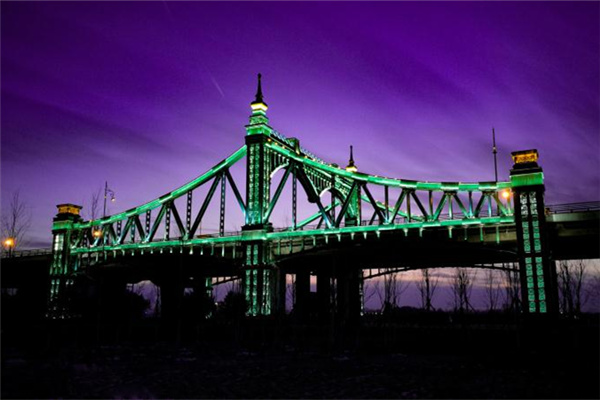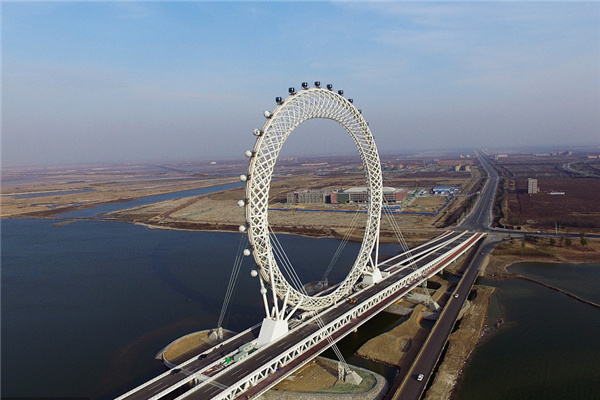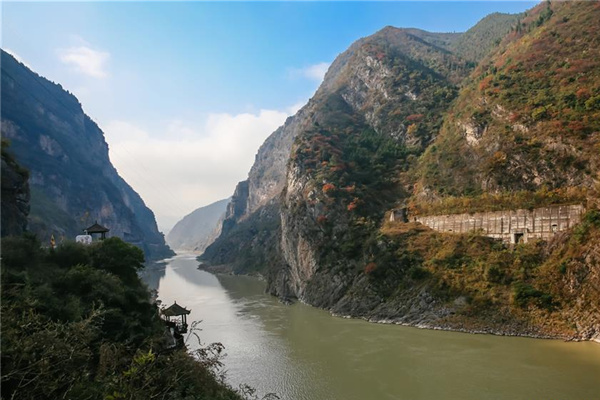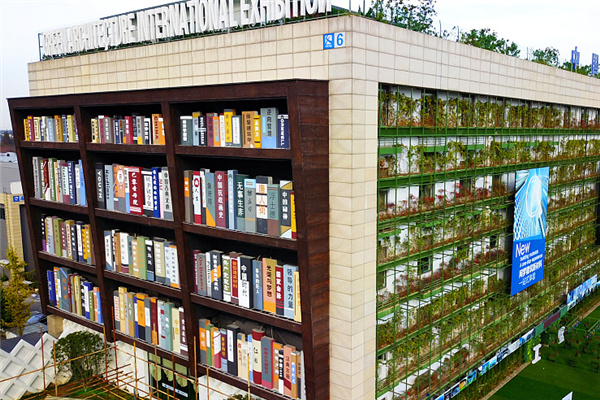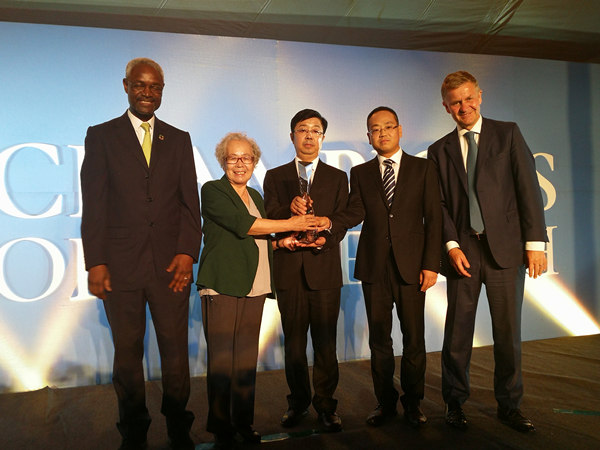

Ding Zujun says he did not expect his Wuxi-based company to make headlines only three years after it began mass production of environmental protection equipment. What he had in mind was a modest development program that might take up to 10 years.
But the outbreak of the blue-green algae calamity at heavily polluted Lake Taihu in May last year that disrupted clean water supplies to Wuxi for several weeks changed Ding's fortune and catapulted his Jiangsu Dingze Environmental Project company to the frontline in the battle against pollution in the region.
Jiangsu Dingze manufactures environmental protection equipment and is located in the Wuxi-based Chinese Yixing Environmental Protection Science and Technology Industry Garden.
It developed a new belt filter press for the condensation and drying of blue-green algae in only three months after the bloom took its toll on the city. Backed by a new flocculant (a substance that causes fine particles to stick together to be more easily removed by a filter) invented by Nanjing University, the filter press has won praise from the Jiangsu Science and Technology Department.
The equipment is able to reduce water content in algae from 99.6 to 88 percent in 30 seconds, which is "highly efficient", says Ding, general manager of the company. "It can provide one-stop processing service from collection, filtering and condensation all the way to drying, while the cost stays far below that of similar products from Japan. Dried algae can then be made into fertilizer or used to produce marsh gas."
The company has drafted contracts worth 10 million yuan with the municipal government, one fourth of its projected sales revenue this year, Ding says.
With success comes fame. Phone calls and orders have increased, though not necessarily for the filter press. The company is also making a name for itself for the research capabilities of the new product.
This, says Ding, was something he had not expected.
"We are not looking for profits or fame with the development of this technology," he said. "Frankly speaking it doesn't have a large profit margin because only governments will perhaps buy it. But as a relatively small company, we need to build on our research capabilities, and we know the experience will have a positive impact upon the future development of the company. The bloom has given us an opportunity to do this earlier than expected."
Back in 1998, Dingze started as a small machinery manufacturing company. It ventured into the green industry in 2001 and did not begin mass production until 2005.
Its products now include sludge dewatering machines, mechanical grillers and waste incinerators as well as a construction team that contracts for environmental projects.
"The growth of our company has showcased the development of the environmental industry in China, although it's still at an early stage" Ding says. "We think it's highly important for companies like us to develop new technologies, which not only bring a competitive edge, but also contribute to a sustainable environment."
In Yixing Environmental Protection Science and Technology Industry Garden, a regional hotbed for China's fledgling environmental industry, there are many companies like Dingze. With incentives offered by the local government, more than 40 companies engaged in the green industry and many more high-tech companies have moved in. Their areas include water and solid waste treatment, prevention of air pollution and the development of eco-friendly materials.
Jiangsu Sanqiang Environment Engineering Co, Ltd is another company in the area specializing in water treatment facilities. Its annual sales revenue may not be impressive, at tens of million yuan, but its growth rate has been maintained at 100 percent for three consecutive years.
"The green industry in China has grown at a rapid pace in recent years as the government tightens control on environmental pollution," says Zhang Zhongyun, deputy general manager of the company. He attributes the growth of the company to technological innovations through cooperation with European companies.
"China's technology in environmental protection is still lagging behind the western world, but it's quite promising," Zhang says.
Like what happened to Dingze, the algae bloom has provided inspiration for the Jiangsu Sanqiang company as well. Through intensive research and consistent investment, it came up with an emergency treatment facility that is able to kill toxins in the source water before they go into the city's waterworks.
"After being polluted by the algae, the lake contains a high degree of algal toxins, which won't be killed simply with disinfection," Zhang says. "Our facility can kill the toxins, with the quality of treated water being much better than the original from the lake."
Optimistic about the market potential of this new production, Zhang adds that the company plans to introduce this technique to other areas in the country that are also plagued by blue-green algae.
(China Daily 03/24/2008 page3)
